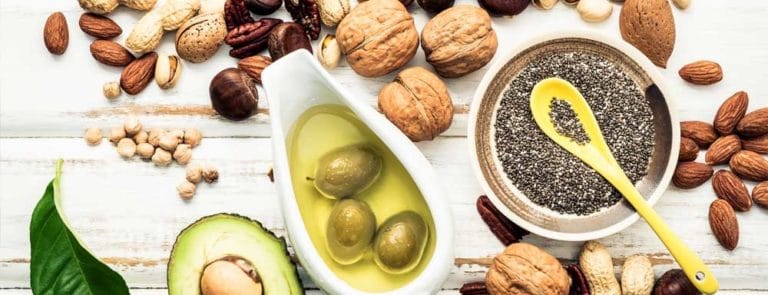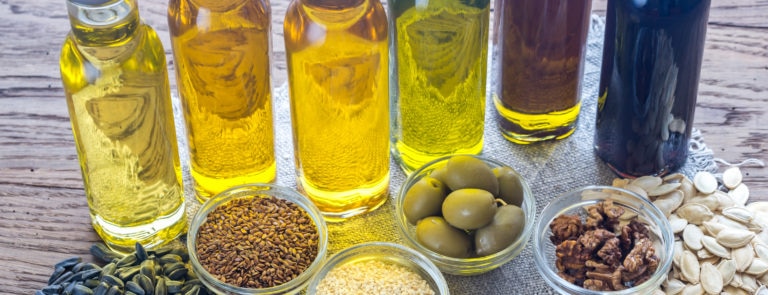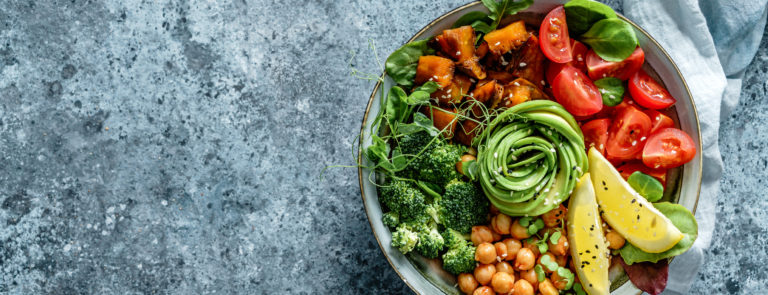15% off €35 OR 20% off €45
Types of fat found in foods - are they all bad?

With shelves groaning under the weight of different oils, fats and spreads, it can feel like a nutritional minefield.
Gone are the days where shopping for butter and oil meant a simple choice.
These days, there’s a whole array of varieties and it can be confusing to know which is the best option.
What are fats?
Every bit of food we eat contains nutrients that provide us with energy and other elements that help your body function properly.
Most of these nutrients fall into three major groups:
- Proteins
- Fats
- Carbohydrates
The body uses fat as a fuel source, and fat is the major storage form of energy in the body.
Fat also has many other important functions in the body, and a moderate amount is needed in the diet for good health.
Fats in food come in several forms, including saturated, monounsaturated, and polyunsaturated.
Too much fat or too much of the wrong type of fat can be unhealthy.
The important thing to remember here is that you need some fat in your diet, but when you have too much, particularly saturated fats, is when you become susceptible to heart disease and are at risk of high cholesterol.1
The current guidelines from the UK government is that you should be cutting down on all fats, and to try and replace saturated fat with unsaturated fat.2
Some examples of foods that contain fats are butter, oil, nuts, meat, fish, and some dairy products.
Why do we need fats?
A small amount of fat is essential for a healthy, well-balanced diet.
The body cannot make essential fatty acids, so it relies on fat which helps the body absorb vitamin A, vitamin D and vitamin E.
Each of these vitamins are fat-soluble, which means they can only be absorbed with the help of fat.
Any fat that is not used by your body’s cells or not used as energy is turned into body fat.
The same applies to unused carbohydrates and proteins, when they are not used they are also turned into body fat.
All types of fat are high in energy.
A gram of fat, whether saturated or unsaturated provides 9kcal (37.kJ) of energy, in comparison with 4kcal (17kJ) for carbs and protein.3
The main types of fat found in food are:
- Saturated fats
- Unsaturated fats
As part of a healthy diet, you should try to cut down on foods and drinks that are high in saturated fats and trans fats and replace some of them with unsaturated fats where possible.
The healthiest types of oil
We cook, bake & drizzle oil on foods. Its a big part of our diets. Looking for ways to be healthier? Knowing the healthiest types of oil is a good start.


Types of fat
There are actually just 3 major types of fat: saturated, monounsaturated and polyunsaturated – and the shelves of butters, spreads and oils all fall into these categories.
Most contain a mix of different types of fat but whichever is the largest component determines the category it falls into.
So, although olive oil contains a little of both saturated and polyunsaturated fats, the lion’s share is monounsaturated fat, at around 73% – so that’s the category it falls into.4
-
Saturated fats
These fats are the ones to minimise because they are associated with increased cholesterol.
When we eat too much (more than 20g a day), we increase our risk of obesity, which is linked to around 20 serious health conditions.5,6
Saturated fats tend to be solid at room temperature, and they’re mainly found in animal products, for example butter, lard, dripping, suet and ghee, but they’re also in palm oil and coconut oil.7
Handpicked content: 5 foods to help lower cholesterol
-
Polyunsaturated fats
Liquid at room temperature, these can help lower levels of your ‘bad’ LDL cholesterol.
Polyunsaturated fats are made up of omega-3 and omega-6 essential fatty acids – both of which are important for our hearts – but omega-3s also reduce inflammation and help our brains.
We tend to get enough omega-6 oils in our diets – found in polyunsaturated margarine, sunflower oils and spreads, flaxseed oil, safflower oil, corn oil, sesame oil, plus soya oils and spreads.8
However, we need more omega-3 essential fatty acids, which are found in oily fish and in lesser amounts in things like flax oil.
If you’re at risk of Type 2 diabetes, research shows swapping from saturated fats to polyunsaturated could slow the progression of type 2 diabetes.9
Handpicked content: Why do we need Omega 3?
-
Monounsaturated fats
This type of fat is also usually liquid at room temperature and found in olive oil and spreads, rapeseed oil and spreads, avocado oil, peanut oil and any spreads made from nuts.
Monounsaturated fats are the healthiest type of oil because they lower both total and bad cholesterol.
However, unlike all other oils, they help maintain good HDL cholesterol.10
A 2015 study published in Diabetology & Metabolic Syndrome also found that a diet rich in monounsaturated fats can help weight loss in obese people.11
Handpicked content: How long does it actually take to lose weight?
-
Trans fats
You'll probably have heard about these unhealthy oils, which are made when hydrogen is added to vegetable oil during processing to increase its shelf life, altering the composition of the fat.12
Trans fatty acids – also known as hydrogenated fats – raise levels of bad LDL cholesterol, reduce good HDL and increase inflammation in the body.13
The good news is that manufacturers have worked hard to reduce their levels in the UK, though they may still be in processed baked and fried goods.14
So avoid anything that says ‘hydrogenated vegetable fats or oils’ on the list of ingredients.
How much fat do you need per day?
The Department of Health advises we aim for fat to make up less than 35% of your daily food intake – or around 70g a fat per day.


Getting the right fats in your diet
Helpfully, these days, nutrition labels on food packaging can help you keep an eye on your total fat and saturated fat intake.
Normally this is listed under saturated fat, but you may find it listed as “saturates” or “sat fat”.15
The NHS provides the following, helpful information to help you understand how the labels work:16
Total fat
High fat – more than 17.5g of fat per 100g
Low fat – 3g of fat or less per 100g, or 1.5g of fat per 100ml for liquids (1.8g of fat per 100ml for semi-skimmed milk)
Fat-free – 0.5g of fat or less per 100g or 100ml
Saturated fat
High in sat fat – more than 5g of saturates per 100g
Low in sat fat – 1.5g of saturates or less per 100g or 0.75g per 100ml for liquids
Sat fat-free – 0.1g of saturates per 100g or 100ml
It may also be worth remembering is that foods that are lower in fat are not always better for you.
Calories can still be found in sugar and other ingredients.
To make sure that you avoid any unwanted fats or calories, make sure that you always read the nutrition labels.
Last updated: 7 October 2021
- https://www.nhs.uk/live-well/eat-well/different-fats-nutrition/
- https://www.nhs.uk/live-well/eat-well/different-fats-nutrition/
- https://www.nhs.uk/live-well/eat-well/different-fats-nutrition/
- https://www.bhf.org.uk/informationsupport/support/healthy-living/healthy-eating/fats-explained
- https://www.nhs.uk/live-well/eat-well/what-are-reference-intakes-on-food-labels/
- https://www.nhs.uk/conditions/obesity/
- https://www.bhf.org.uk/informationsupport/support/healthy-living/healthy-eating/fats-explained
- https://medlineplus.gov/ency/patientinstructions/000747.htm
- https://www.sciencedaily.com/releases/2016/03/160321153926.htm
- https://www.healthyfood.co.uk/article/different-types-of-fat-explained/
- https://www.ncbi.nlm.nih.gov/pmc/articles/PMC4653532/
- https://www.healthline.com/nutrition/why-trans-fats-are-bad
- https://www.healthline.com/nutrition/why-trans-fats-are-bad
- https://www.ncbi.nlm.nih.gov/pubmed/23601386
- https://www.nhs.uk/live-well/eat-well/different-fats-nutrition/
- https://www.nhs.uk/live-well/eat-well/different-fats-nutrition/



